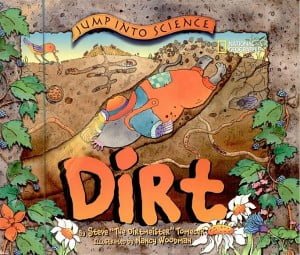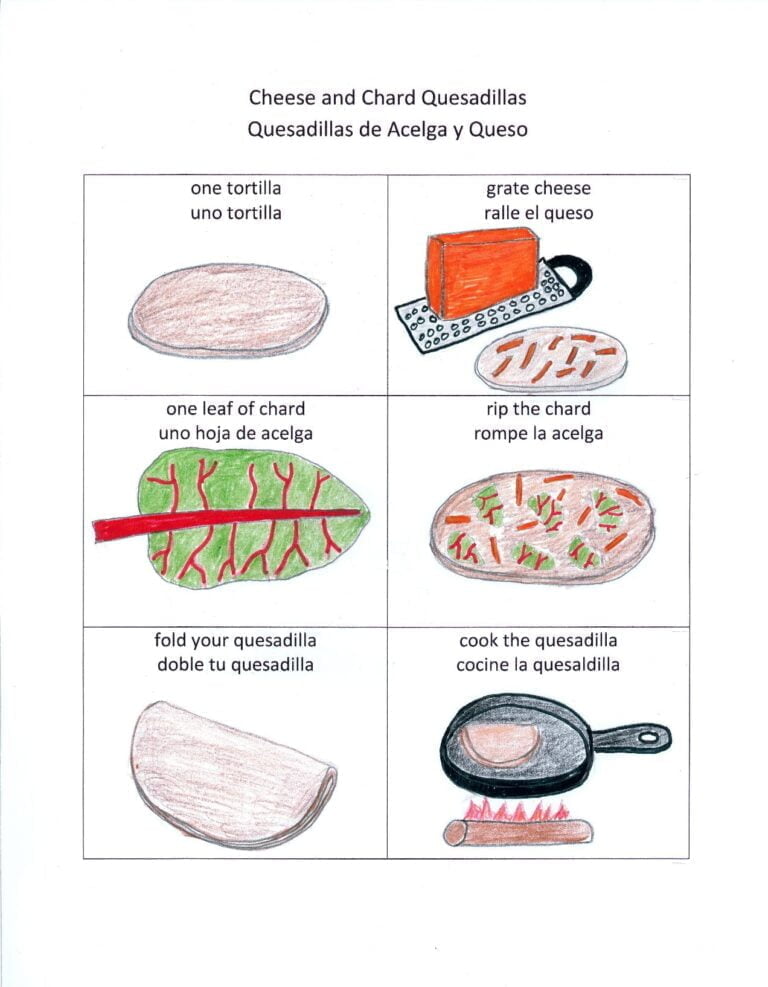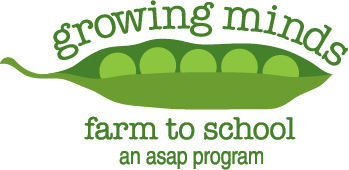This week’s theme is soil. Our “Growing Minds Day by Day” educational resource lists are designed for families and educators.
Growing Minds Day by Day
Soil
Healthy soil is the foundation for a healthy garden, so it’s important to learn some of the basics of soil science. Soil is composed of air, water, minerals , and organic matter. The organic matter in soil includes both living organisms–like fungus and insects–and dead plants and animals. Soil is where much of nature’s “recycling” function happens. In the soil, dead organic material decomposes, and the nutrients from those organisms are made available for living plants to use. Different types of soil are classified according to their mineral makeup: sand, silt, and clay. Sand particles are the largest of the three types, silt particles are mid-sized, and clay particles are the smallest. Different soil types have different properties that affect how well plants grow in them. For example, water drains through sand very quickly, while it drains through clay very slowly. Different types of plants are best-adapted to different types of soil. When soil contains a good mixture of sand, silt, and clay, plus lots of humus (or rich, dark organic matter), it’s call loam. Loamy soil is great for gardening. Gardeners can add amendments like compost to their soil to improve it’s quality and structure over time. Use the resources below explore the wonderful world of soil with your students or family.
Books:
 Dirt, the Scoop on Soil
Dirt, the Scoop on Soil
By Natalie Myra Rosinsky
Dig into the wondrous world of dirt! In this introduction to soil, young science and nature lovers will discover the components of dirt, how it’s made, and how to maintain healthy soil for the environment. Alongside charming illustrations, award-winning author Natalie M. Rosinsky delivers fun, fact-filled text for an engaging read-aloud or beginning read-alone. Includes hands-on experiments! Watch a read aloud on YouTube.
 Jump Into Science: Dirt
Jump Into Science: Dirt
By Steve Tomecek
What is soil? Who lives in dirt? How does earth help things grow? The answers are within this fun- and fact-filled picture book. Just follow the gardening star-nosed mole in the colorful outfits…and dig in! Watch a read aloud on YouTube.
Find more books
Visit the Growing Minds’ farm to school literature database to discover more of our favorite children’s books about soil, compost, and worms. Educators in the Asheville area can check out books from our lending library.
Local Food Recipe:
 Hearty winter greens like spinach, kale, and Swiss chard are available at farmers markets in our region throughout much of the year, including in the winter months. Pick up a bunch of your favorite local green and use it to make these local greens quesadillas.
Hearty winter greens like spinach, kale, and Swiss chard are available at farmers markets in our region throughout much of the year, including in the winter months. Pick up a bunch of your favorite local green and use it to make these local greens quesadillas.
Local Greens Quesadillas
Serves 4
Ingredients:
- 5 oz. local spinach, kale, or chard leaves
- 8 medium corn or flour tortillas
- 2 cups shredded cheddar or jack cheese
- 2 green onions, chopped
- 1 tsp. garlic powder
- 1 tsp. chili powder
- 1 Tbsp. olive oil
Directions:
- Heat olive oil in a large non-stick pan over medium heat. Add spinach and cook until wilted, seasoning with garlic and chili powder. Remove spinach from the pan and set aside.
- Place one tortilla onto the skillet.
- Sprinkle 1/4 cup of cheese evenly over the tortilla. Top with 1/4 of the cooked spinach, then sprinkle on 1/4 of the green onions.
- Cover with another 1/4 cup of cheese. Place the second tortilla on top.
- Cook until the bottom tortilla is crisp and slightly brown, about 3 minutes. Flip the tortilla and cook for another 3 minutes, or until brown and crisp.
- Slide the quesadilla onto a cutting board and cut into wedges to serve.
- Repeat with remaining ingredients to make 3 more quesadillas.
Educational Resources:
 Learning about soil is a great way to get ready for spring gardening activities. The Growing Minds website features several soil-themed lesson plans and educational resources that can be used in the classroom or adapted to the home garden:
Learning about soil is a great way to get ready for spring gardening activities. The Growing Minds website features several soil-themed lesson plans and educational resources that can be used in the classroom or adapted to the home garden:
- Soil Exploration (K-2): Through garden exploration, students will learn about the properties of soil and why soil is important to plants. They will closely observe soil and practice tallying and reporting results of soil experiments.
- Soil Temperature (K-2): Students will use thermometers to measure soil temperature and use the information to determine if the soil is warm enough to support plant growth.
- Soil Amendments (K-2): Students learn about the benefits of soil amendments and spend time recording their garden observations.
- Soil Jeopardy lesson plan (grades 4-5): Students use books and handouts to create game show questions about soils and then form teams and play the game.
- Meet Your Farmer Video – Ivy Creek Family Farm: Hear farmer Anna Littman talk about the living organisms found in soil, as well as the importance of building healthy soil to grow healthy, tasty vegetables.
- Worm & Compost Resource List
More resources
- Color your own soil ecosystem with this “Soil Rocks” coloring sheet (pictured above) by Asheville-based artist Kathleen Littlefield.
- You can find a great list of K-12 soil experiments and hands-on activities–including soil painting, soil colors, and soil properties–compiled by the Soil Science Society of America at soils4kids.org.
- Want to teach younger kids the basics about the different types of soil (sand, silt, clay, and loam)? Check out the “Types of Soil Song” performed by educator Crystel Hidalgo.
Activity:
 Simple Soil Science
Simple Soil Science
Temperature: Using a thermometer, record the temperature of the soil in the garden. Measure the temperature at one inch deep, two inches deep, and six inches deep. What difference do the children note? Why do they think the temperature changes with depth?
Soil Types: Investigate different types of soil with the children. Collect samples of dry, hard-packed soil, loose soil, gravel, silt, sand, and clay. Allow children to inspect and explore the samples for bugs, twigs, and other matter. What do they find? How does the dirt feel? How does it smell? Would it be good for planting? What happens when it gets wet?
Soil Composition: Fill several jars halfway with soil collected from the garden or yard. Add water nearly to the top of the jars. Put the lids on tightly. Shake the jars vigorously for thirty seconds. Let the jars stand until the dirt and water settle–it make take several hours for the smallest particles to settle. Observe the soil layers in the jars. How many layers are there? Which layer is made of the biggest particles? Which is made of the smallest? Can your children guess why? Is there anything floating at the water’s surface?
Preparing the Garden Soil for Spring:
Pick up a handful of spring soil from your garden and you’ll find that it’s moist and cool. To get your garden ready for spring planting, add soil amendments like compost or Nature’s Helper to the soil. These amendments contain organic matter and nutrients that are critical for creating healthy, living soils that can support plant growth. As plants grow, their roots take up essential nutrients from the soil. Adding compost, organic matter (like mulch or dried grass clippings) or other amendments to the soil helps replenish those lost nutrients.
In raised beds, you can gently mix amendments into the soil by turning the soil with a shovel or pitch fork. Involve children in preparing the soil for planting and include lessons on plant needs and soil composition.
If you’re interested in finding out more detailed information about the composition, nutrient levels, or pH (acidity or alkalinity) of your garden soil, you may want to take soil samples to send to the lab this spring for soil testing. The North Carolina Department of Agriculture and Consumer Services Agronomic Division will analyze your soil samples free of charge or for a small fee. Forms and boxes for samples are available from your local county Cooperative Extension center.
Beyond tending to your soil, late winter is a great time to go out to the garden and observe what needs to happen before spring planting begins. Lead children in brainstorming garden tasks and the tools and supplies they will need. Are there weeds to be pulled? Signs to be replaced? Does the compost pile need to be turned? Work together to clear the beds of weeds and prepare the soil using different garden tools. Give children leadership roles and encourage them to take responsibility for the garden.
—
That’s it for this week. Check back next week for new resources. Click here to access Day by Day resources from past weeks. If you didn’t find what you’re looking for here, please visit our Lesson Plans page.

